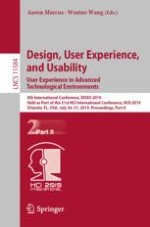2019 | OriginalPaper | Buchkapitel
Artificial Intelligence Augments Design Creativity: A Typeface Family Design Experiment
verfasst von : Zhen Zeng, Xiaohua Sun, Xiang Liao
Erschienen in: Design, User Experience, and Usability. User Experience in Advanced Technological Environments
Aktivieren Sie unsere intelligente Suche, um passende Fachinhalte oder Patente zu finden.
Wählen Sie Textabschnitte aus um mit Künstlicher Intelligenz passenden Patente zu finden. powered by
Markieren Sie Textabschnitte, um KI-gestützt weitere passende Inhalte zu finden. powered by
